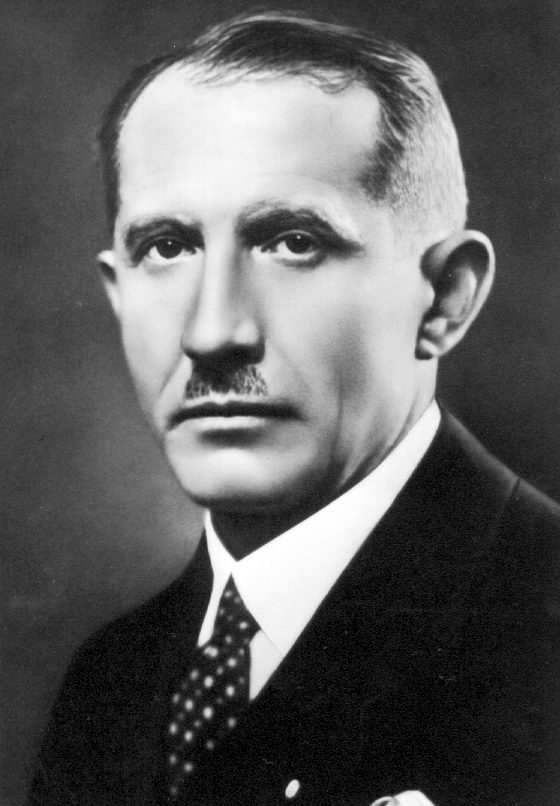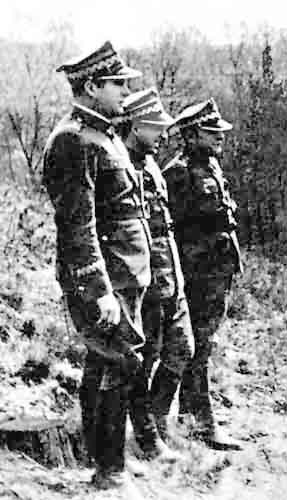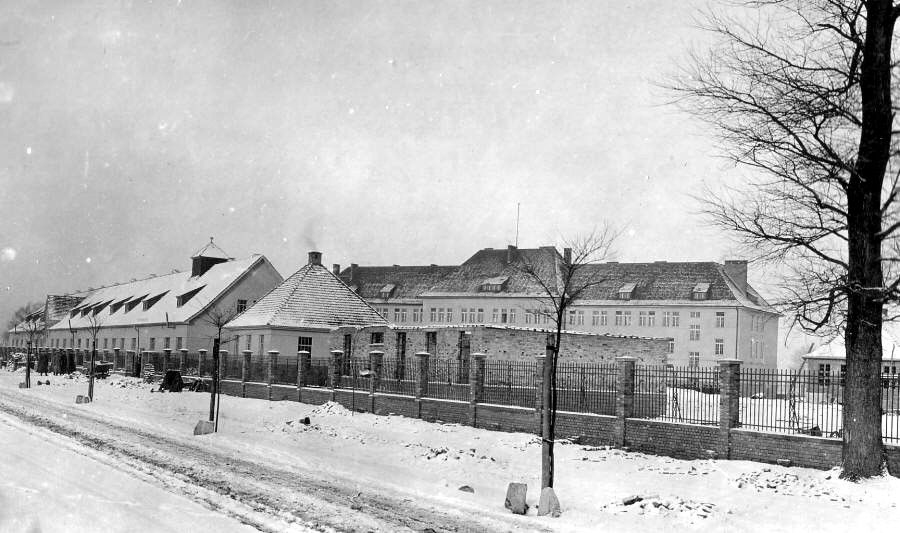|
Józef Baryła
Józef Baryła (born November 21, 1924 in Zawiercie, died August 4, 2016 in Warsaw) was a Lieutenant General of the Polish Army, Doctor of Humanities (1964), Head of the Main Political Board of the Polish Army (1980–1986), Deputy Minister of National Defense (1980–1986), Member of the Military Council of National Salvation (1981–1983), party and state activist, Member of the Central Committee of the Polish United Workers' Party (1980–1981 and 1985–1990), Secretary of the Central Committee of the Polish United Workers' Party (1985–1988), Member of the politburo of the central committee of the Polish United Workers' Party (1986–1988), Chairman of the Law and Rule of Law Commission of the Central Committee of the Polish United Workers' Party (1985–1986), Member of the Presidium of the Supreme Council of the Society of Fighters for Freedom and Democracy (1985–1990), Ambassador to Syria and Jordan (1988–1990). Member of Parliament of the Polish People's Republic of th ... [...More Info...] [...Related Items...] OR: [Wikipedia] [Google] [Baidu] |
Zawiercie
Zawiercie () () is a town in southern Poland located in the Silesian Voivodeship with 49,334 inhabitants (2019). It is situated in the Kraków-Częstochowa Upland near the source of the Warta River. The town lies near the historical region of Silesia, but belongs to Lesser Poland. Zawiercie is an industrial town with a rich history of iron manufacturing dating back to the 15th century, with other industries developed since the 19th century. It contains both historical Baroque architecture and preserved historical industrial heritage. It is home to notable volleyball club Warta Zawiercie (volleyball), Warta Zawiercie. Name and location Zawiercie, even though currently associated with Silesia, belongs to Lesser Poland. The town lies near the source of the Warta river, and its name probably comes from the location. The inhabitants of the ancient village of Kromołów, Silesian Voivodeship, Kromołów, to reach another village located on the other side of the river, would go ''behind ... [...More Info...] [...Related Items...] OR: [Wikipedia] [Google] [Baidu] |
Anti-Soviet Resistance By The Ukrainian Insurgent Army
The anti-Soviet resistance by the Ukrainian Insurgent Army (''Ukrainska Povstanska Armiya'', UPA) was a guerrilla war waged by Ukrainian nationalist partisan formations against the Soviet Union in the western regions of the Ukrainian SSR and southwestern regions of the Byelorussian SSR, during and after World War II. With the Red Army forces successful counteroffensive against the Nazi Germany and their invasion into western Ukraine in July 1944, UPA resisted the Red Army's advancement with full-scale guerrilla war, holding up 200,000 Soviet soldiers, particularly in the countryside, and was supplying intelligence to the Nazi Sicherheitsdienst (SD) security service. One major UPA victory against the Soviet Union was the killing of a high ranking Soviet General Nikolai Vatutin. According to Soviet documents during the conflict, a total of 153,000 people were killed, 134,000 arrested, and 203,000 deported by the Soviet authorities, mostly in the years 1944–1945. At the same ti ... [...More Info...] [...Related Items...] OR: [Wikipedia] [Google] [Baidu] |
Martial Law In Poland
Martial law in Poland () existed between 13 December 1981 and 22 July 1983. The Polish United Workers' Party, government of the Polish People's Republic drastically restricted everyday life by introducing martial law and a military junta in an attempt to counter political opposition, in particular the Solidarity (Polish trade union), Solidarity movement. Since the late 1970s, Poland had been in a deep economic recession. Edward Gierek, First Secretary of the Polish United Workers' Party (PZPR), had obtained a series of large loans from foreign creditors to achieve better economic output. This instead resulted in a domestic crisis. Essential goods were heavily rationing, rationed, which acted as a stimulus to establishing the first anticommunist trade union in the Eastern Bloc, known as Solidarity (), in 1980. Gierek, who permitted the trade union to appear per the Gdańsk Agreement, was dismissed from his post less than a month later and confined to house arrest. Following countl ... [...More Info...] [...Related Items...] OR: [Wikipedia] [Google] [Baidu] |
Henryk Jabłoński
Henryk Jan Jabłoński (; 27 December 1909 – 27 January 2003) was a Polish historian and politician. After 1948, he became a politician of the ruling Polish United Workers' Party, as well as a historian and professor at Warsaw University. He served as head of state of the People's Republic of Poland between 1972 and 1985. Life and career Jabłoński was born in Stary Waliszew in the Warsaw Governorate of Congress Poland. From 1931, he was a member of the Polish Socialist Party (PPS). During World War II he fought in the Battles of Narvik, battle of Narvik (Norway) and then joined the French Resistance. In 1945 Jabłoński become a member of the State National Council (KRN), and during the years 1946 and 1948 he had high functions in the PPS (chairman of Central State Committee and its vice-leader). He approved joining the PPS with the Polish Workers' Party (PPR, ''Polska Partia Robotnicza''). From 1947 to 1972, he was a deputy to the Sejm. In 1948 he was appointed professor at ... [...More Info...] [...Related Items...] OR: [Wikipedia] [Google] [Baidu] |
Marian Spychalski
Marian "Marek" Spychalski (, 6 December 1906 – 7 June 1980) was a Polish architect in pre-war Poland, and later, military commander and a communist politician. During World War II he belonged to the Polish underground forces operating within Poland and was one of the leaders of the People's Guard, then People's Army. He held several key political posts during the PRL era, most notably; Chairman of the Council of State, mayor of Warsaw and Defence Minister. Biography Early career Born to a working-class family in Łódź, Spychalski graduated from the Faculty of Architecture of the Warsaw University of Technology in 1931. That same year he joined the KPP,, translated by George Shriver and Stephen Shenfield. and kept his membership after the Nazi-Soviet invasion, when in 1942 KPP became the Polish Workers' Party, renamed in 1948 as the Polish United Workers' Party. Before World War II, he practised architecture and won several national and international competitions and ... [...More Info...] [...Related Items...] OR: [Wikipedia] [Google] [Baidu] |
Belweder
Belweder (; from the Italian ''belvedere'', "beautiful view") is a neoclassical palace in Warsaw, Poland. Erected in 1660 and remodelled in the early 1800s, it is one of several official residences used by Polish presidents as well as a state guest house for visiting heads of state. The complex is situated south of Warsaw's city center, in the vicinity of the historic Royal Baths Park (Łazienki). History The present building is the latest of several that stood on the site since 1660. Belweder once belonged to Poland's last king, Stanislaus Augustus, who used it as a porcelain-manufacturing plant. From 1818 it was the residence of Grand Duke Constantine Pavlovich, who de facto acted as viceroy in the Congress Kingdom of Poland. He fled from Belweder at the beginning of the November 1830 Uprising. After the re-establishment of Poland's independence following the First World War (1918), Belweder served as the residence of Marshal Józef Piłsudski, Chief of State (1918–2 ... [...More Info...] [...Related Items...] OR: [Wikipedia] [Google] [Baidu] |
State Council Of The Polish People's Republic
The Council of State of the Republic of Poland () was introduced by the Small Constitution of 1947 as an organ of executive power. The Council of State consisted of the President of the Republic of Poland as chairman, the Marshal and Vice-marshals of the Sejm, President of the Supreme Audit Office, and potential other members. The Council of State had the power to approve decrees issued by the Council of Ministers, exercise supreme control over the local national councils, approve promulgation of laws concerning the budget and military draft, declare a state of emergency and martial law, initiate legislation, and others.Small Constitution at the Sejm website Under the 1952 |
Pomeranian Military District
The Pomeranian Military District (Polish acronym POW) was a military district of the Polish Armed Forces from 1945 to 2011. Formally it was subordinate to the Minister of National Defence in the operational matters of defense and detached government administration (Art. 14 Law of 21 November 1967 on the universal duty to defend the Polish Republic). The district command headquarters was at Toruń (1945–1946), Bydgoszcz, Gdańsk, Koszalin, and then at Bydgoszcz. From 1947 to 2007 1 Gen. J. Dwernicki Street, from 2007 to December 2011 105th Szubinska Street. Since 1999, the POW is one of the two military districts in Poland. After 92 years, in accordance with the decision of the Minister of National Defence, in December 2011 the Pomeranian Military District was deactivated. First Combined Arms Army The First Combined Arms Army (; see :pl:1 Armia Ogólnowojskowa WP (1955-1990)) was a military formation of the Polish Land Forces created in 1955. It was intended to guard the Ba ... [...More Info...] [...Related Items...] OR: [Wikipedia] [Google] [Baidu] |
Polish General Staff
Polish General Staff, formally known as the General Staff of the Polish Armed Forces ( Polish: ''Sztab Generalny Wojska Polskiego'') is the highest professional body within the Polish Armed Forces. Organizationally, it is an integral part of the Ministry of National Defence and the Chief of the General Staff is the highest ranking military officer at the Ministry. It was created in 1918, and was renamed the Main Staff (''Sztab Główny'') in 1928 before being reverted back to General Staff (''Sztab Generalny'') in 1945 by the Soviet backed Communist Government. Currently General Wiesław Kukuła holds the position of Chief of the General Staff of the Polish Armed Forces (''Szef Sztabu Generalnego Wojska Polskiego''). History and structure On 25 October 1918, a decision was made to establish the directorate of the chief of staff of the Polish Army. On 22 December 1928 the General Staff was renamed to the Main Staff (''Sztab Główny''). In September 1939, during the Invasion of Pol ... [...More Info...] [...Related Items...] OR: [Wikipedia] [Google] [Baidu] |
Bemowo Piskie
Bemowo Piskie is a village in the administrative district of Gmina Biała Piska, within Pisz County, Warmian-Masurian Voivodeship, in north-eastern Poland. It lies approximately north of Biała Piska, north-east of Pisz, and east of the regional capital Olsztyn. It is located in the historic region of Masuria. History The village was established in 1561, when Andrzej Szlaga founded an inn at the site. In the past the village was also known to the local Polish Masurian populace as ''Szlaga'' (after its founder) or ''Karczmisko'' (after the Polish word ''karczma'', which means "inn"). From the early 18th century it was part of the Kingdom of Prussia, and from 1871 to 1945 it was also part of Germany, administratively located in the province of East Prussia. After the defeat of Nazi Germany in World War II in 1945, the village along with Masuria became again part of Poland. In 1955, the village was renamed from ''Karczmisko'' to ''Bemowo Piskie''. NATO Training Base Bemowo Pis ... [...More Info...] [...Related Items...] OR: [Wikipedia] [Google] [Baidu] |
Piła
Piła (; ) is a city in northwestern Poland and the capital of Piła County, situated in the Greater Poland Voivodeship. Its population was 71,846, making it the city in the voivodeship after Poznań and Kalisz and the largest city in the northern part of Greater Poland. Founded in the 14th century, Piła was a royal city of Poland, whose prosperity came from crafts and trade. The city is located on the Gwda river and is famous for its green areas, parks and dense forests nearby. It is an important road and railway hub, located at the intersection of two main lines: Poznań–Szczecin and Bydgoszcz–Krzyż Wielkopolski. Piła is the center of light industry, culture and education in northern Greater Poland, and is particularly known for motorcycle speedway racing. City name ''Piła'' is a Polish language, Polish word meaning "saw". This was a typical name denoting a village of Lumberjack, woodcutters belonging to a local noble. The German name ''Schneidemühl'' means "sawmill" ... [...More Info...] [...Related Items...] OR: [Wikipedia] [Google] [Baidu] |



